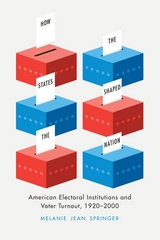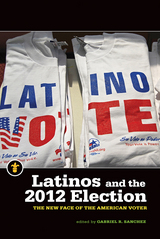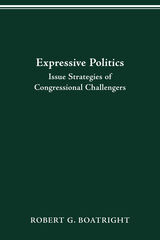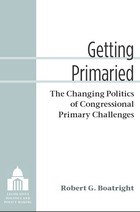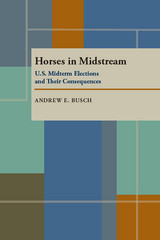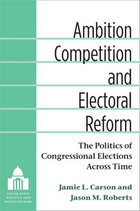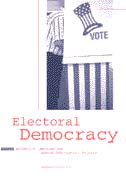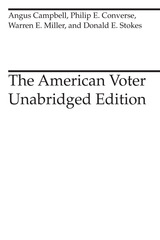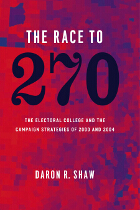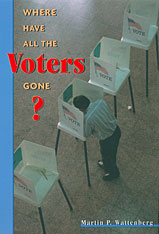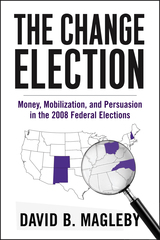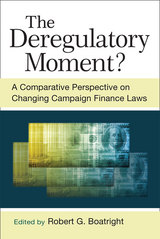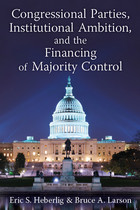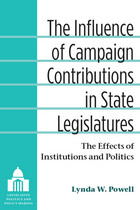[I]n The New American Voter we have a book every bit as grand and ambitious as its predecessors. The breadth of research is impressive. The authors have two of the most distinguished careers in American social sciences.
-- Michael C. Dawson Chicago Tribune
This is an important book by two important political scientists...The genius of Miller's and Shanks' telling of the tale...lies in the careful unfolding of [their] theses in an almost tangible texture of human context in which the American electorate takes on the flavor of the real, breathing and behaving organism that makes politics--as distinguished from the study of mass political behavior. The authors' ability to touch those dimensions simultaneously is, in very large part, what makes this a landmark book...The New American Voter is unquestionably a major contribution, and will be a touchstone for scholars making their way along our generation's paths to understanding the reasons and the meaning of political behavior in the last half of the twentieth century.
-- Michael Kahan Presidential Studies Quarterly
It should be no surprise that this long-awaited volume will become an instant classic among voting studies. This effort by Miller (one of the field's founders) and Shanks (an accomplished scholar) caps more than four decades of using survey research to explain individual voting behavior in US presidential elections...Every page shows sophisticated minds at work, raising multiple explanations, sorting them out with cutting-edge methodologies, and thereby moving knowledge forward. All this is made possible by the rich data generated by National Election Studies, one of Miller's many legacies to political research...[A] pathbreaking study.
-- Choice
For those struggling to understand and explain the voting behavior of Americans, Miller and Shanks, two prominent academic political scientists, offer one of the most comprehensive analyses of the subject. Not since the classic The American Voter was published in 1960 has a book attempted such a sweeping examination of American voting patterns...[This book] is an excellent example of [voting] research and should become the standard reference work in the field.
-- Library Journal
The New American Voter is the most important and impressive study of electoral behavior, not only in the United States but in general, to appear in twenty years. The result is a landmark book which will permanently alter not only the conventional interpretation of recent presidential elections, but our common understanding of American electoral change in the past forty years and, even more significantly, the way in which future elections in the United States and elsewhere are studied. The book is a prodigious feat of theoretical clarity, painstaking empirical analysis, and methodological sophistication. It is a monumental achievement.
-- Ivor Crewe, University of Essex
There is no other book like it on vote choice and it is most unlikely that any other authors will come along with the perspective of Miller and Shanks on this series of electoral data or with their command of the methodology of data collection and analysis. The analysis of recent elections by these authors has moved beyond other work. There are no competitive forms of vote choice analysis in the literature. What sets their work apart stylistically and substantively is a willingness and ability to explicate fully every step in the analysis.
-- William H. Flanigan, University of Minnesota
If there is a single word that immediately comes to mind in reflecting on and characterizing The New American Voter, it is 'magisterial.' The book is written by the grand master in the field of electoral behavior for half a century and the patient mentor to several generations of scholars, joined here by an associate who is a pioneer in his own right. There is every reason to expect that The New American Voter will be the guiding star on the firmament of electoral studies for decades to come. It will be an inspiring stimulus to all those future inquiries that lay claim to a dispassionately scientific understanding of the enormously complex American democratic polity.
-- Heinz Eulau, Stanford University
This is a huge enterprise that will have a very powerful impact on the way we all think about elections, voting, electoral research, and the long-run ebb and flow of political behavior. The three central themes--the arguments about political generations, the distinction between explaining vote choice and explaining elections outcomes, and the analytical distinctions made among the causes of choice--are all powerful ideas that represent real contributions.
-- Steven Rosenstone, University of Michigan
The New American Voter analyzes the U.S. National Election Studies over the course of four decades, providing the most comprehensive portrait of electoral change ever published. The analyses are clear, forceful, and compelling, explaining the long-term processes that have transformed the American electorate.
-- Paul R. Abramson, Michigan State University

